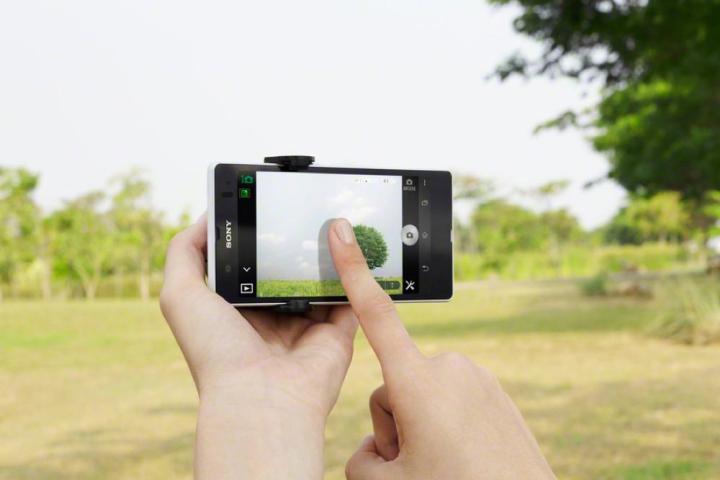
When we looked at Sony’s new Cyber-shot QX100 “lens-style” camera, one of the questions that came to mind was, will it have third-party support? The camera, which is designed to work with a smartphone, could only be controlled via Sony’s PlayMemories Mobile app. Wouldn’t it be awesome if apps like Instagram or Vine could also take advantage of the camera’s photo and video capture capabilities? After all, the point of using this camera is to give your smartphone photography better-looking photos. Well, it seems that this has been on Sony’s mind too. The company has released its Camera Remote API (in beta) that would allow iOS and Android developers to build support for Sony’s Wi-Fi-enabled cameras into their apps.
The API, also known as the Application Program Interface, will allow apps to shoot photos and movies, see real-time images from the camera, and trigger the camera’s self-timer and zoom. But features aren’t just limited to these functions, as developers could also add in unique capabilities like time-lapse photography.
For example, if you want to post an image to your Instagram account that you just took with a QX camera, currently you’d have to first shoot it using the PlayMemories Mobile app, save it to the phone, and then reopen the image in Instagram where you’ll upload the image. If Instagram were to build in native support for the QX camera, you would bypass a lot of the steps and shoot from within Instagram. (Before you get too excited, know that we’re only using Instagram as an example, as there is no announcement of who’s supporting the camera yet.)
But it’s not all about the QX cameras. Sony announced that six other Wi-Fi-enabled cameras are also compatible with the API: the Action Cam HDR-AS30 and HDR-AS15; the HDR-MV1 music video recorder; and NEX-6, NEX-5R, NEX-5T mirrorless interchangeable lens cameras. The HDR-AS30, HDR-MV1, and NEX-5T were just recently announced.
Sony’s newer cameras have had Wi-Fi built in for some time, however, like many cameras, they’re limited in what they can do. Like the QX cameras, with this API Sony is acting on the premise that “if you can’t beat them, join them.” By opening the door to its cameras to app developers, Sony’s cameras may just become more attractive to smartphone users.
Editors' Recommendations
- Best Sony camera deals: Mirrorless camera bodies and lenses
- Sony teases the more approachable FX6 cinema camera
- Panasonic takes on Sony in the vlogging camera game with compact Lumix G100
- What is Photoshop Camera? How Adobe’s new A.I. app edits photos before you take them
- Sony’s ZV-1 is an influencer-targeted upgrade to the best compact camera


